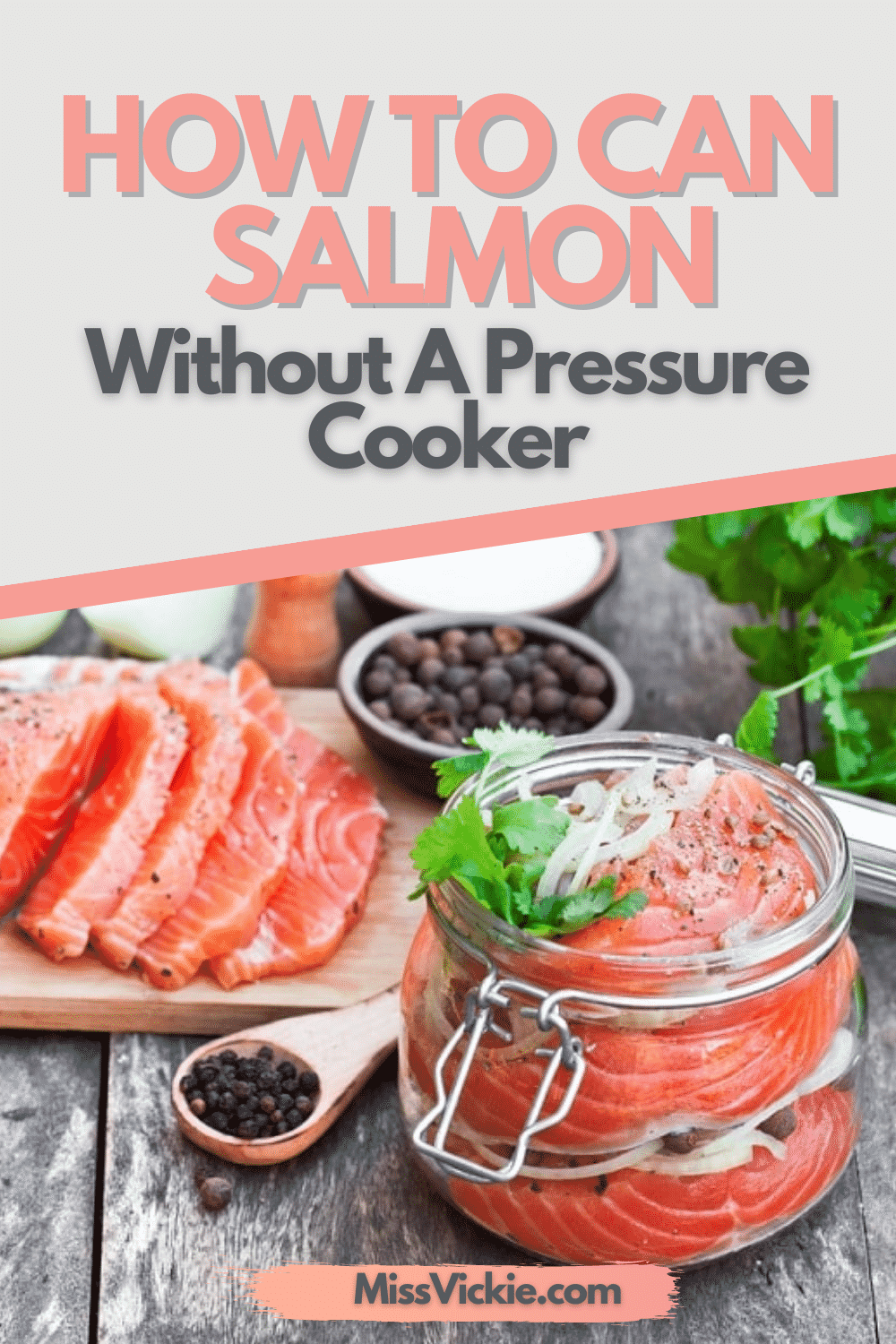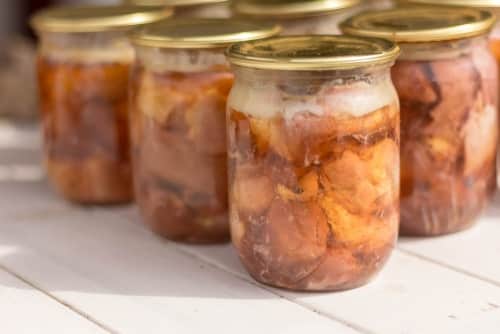
Canning Salmon Without a Pressure Cooker (High-Risk Involved)
Pressure cookers and pressure canners for home use are relatively recent innovations. Silicone and rubber fittings were not easy for a homemaker to get, particularly before WWII. Before that, people did all canning via a water bath canner.
For those who aren’t sure of the difference, water bath canning involves putting jars of food into a large pot of boiling water and processing them for long enough to preserve them safely. This is safe for acidic foods like fruit and tomatoes only.

Pressure canning involves the use of steam under pressure to render food safe to keep. This method reaches much higher temperatures than water bath canning, so it is safe for non-acidic foods too. Non-acidic foods include meat, vegetables, and fish. Yes, salmon falls into this category.
Only pressure canning reaches high enough temperatures to kill off botulism and other food-borne pathogens. The boiling point of water in your water bath is only 212 degrees Fahrenheit. Botulism spores are only killed at 250 degrees Fahrenheit. Only a pressure cooker or pressure canner will reach such temperatures.
What About Oven Canning?
Maybe like me, you’re thinking, “But hey, my oven reaches 250 Fahrenheit! Why can’t I put the jars of salmon in the oven?” While some people do use the oven canning method, it is not recommended and is not safe. Though you can set your oven for as high as 250°F, this doesn’t mean the food inside the jar will reach the same temperature.
Therefore, you cannot know if the food has been hot enough for a consistently long enough time to kill all bacteria or mold spores. For example, when you place a meat roast in the oven at 250 degrees Fahrenheit, after a time, you insert the meat thermometer. You will find that the internal temperature of the meat is only about 175 degrees.
The same principle applies to jars of salmon or other food placed in the oven. Even if the contents of the jars boil, the food inside will not get hotter than 212 degrees Fahrenheit, as with a water bath. Dry air is not a good conductor of heat. This is why moist pressure canning methods ensure that the jar’s inner temperature will be high enough to kill pathogens.

Something else that should keep you from oven canning your salmon forever is this: they can easily explode when you put glass jars into the oven at high temperatures. This can damage your oven. If you open the oven to remove the jars and one explodes, you will be severely injured and possibly lose your eyes due to the flying shards of glass.
Warning: Pressure canning is more effective at killing the botulism potential. Water bath canning salmon is a traditional, unsafe method and NOT a scientifically approved method. Try at your own risk!
If you are looking for a SAFE method, please only do PRESSURE CANNING as per videos below!
To conclude, we do not recommend canning salmon or any other low-acidity food without a pressure canner. A pressure cooker or canner is an excellent investment, and they are not that expensive anymore. Plus, it will save you loads of money in the long term because you will be able to can many foods when they are on sale or have an excess of something.
Canning salmon on your own is so rewarding. Open a jar, and within minutes you can make a delicious salmon salad, salmon dip, or seafood chowder. Imagine the possibilities. Let us know how your canning goes, and please stay safe!